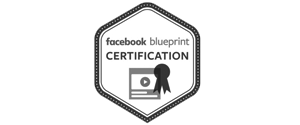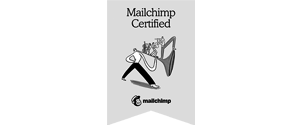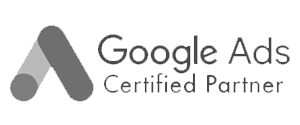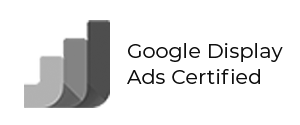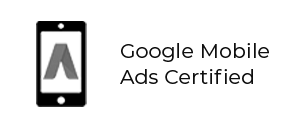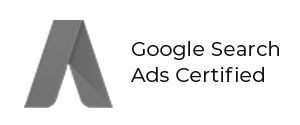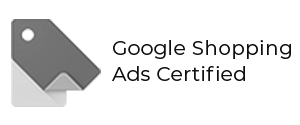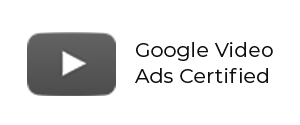
Don't see your question?
ASK US!
Don’t see your question?
ASK US!
View All Questions
- What is the difference between marketing and advertising? Aren’t they the same thing?
- What does SEO mean?
- What is a landing page?
- What are the top ten landing pages?
- What does the top search queries mean?
- What does users and sessions mean?
- What does the average session duration mean?
- What does the average time on page mean?
- What does pages per session mean?
- What does goal conversion rate mean?
- What are leads?
- What does PPC mean?
- What does CTR mean?
- What does CPC mean?
- What are impressions?
- What is a bounce rate?
- What is organic reach?
- What is paid reach?
- What does CPA mean?
- What is social media engagement?
- What is the difference between owned vs earned media?
- What is so difficult about social media advertising? Can’t I just do it myself for free?
- How much does it cost to create a logo?
- How do I send you my files?
- I have a design I’ve used before that was just a template, but I’d like something better can you help me design it?
- After you design my stuff do I own it?
- Your printing costs are too high. Can you do better?
What is the difference between marketing and advertising?
Aren’t they the same thing?
What does SEO mean?
SEO or Search Engine Optimization is a term that encompasses different online strategies that essentially help drive traffic to your company’s website. By using these strategies, the goal is to get your content and your business to the top of the search engine rankings. When you Google something, do you ever go beyond the first page to find what you’re looking for? We didn’t think so. That is why it’s so important to ensure that when someone is searching for your business (or something your business offers), YOU are one of the first results. At 3SIXTY Marketing Solutions, we can make that happen for your business.
What is a landing page?
It’s a common belief that a landing page is any webpage you land on after clicking any link in an advertisement or campaign. That isn’t true. A landing page is a weblink that is separate from your regular website. It asks your customer for a specific call to action (sign up, buy a product, download an app, etc.). These pages typically generate more leads and can allow you to achieve a higher conversion rate because there is no clutter to distract the user from completing the call to action.
What are the top ten landing pages?
The top ten landing pages on your website are the pages that receive the most traffic. In other words, they are the pages that users find the most helpful when they come to your website. These top ten pages are where you want to work to improve your conversion rates.
What does the top queries in search mean?
Another great feature from Google Analytics is you can see what people are searching to find your website. This can provide you with insight as to what type of content your audience wants to find on your website as well as search terms or keywords that lead to higher engagement on your site that you should work into other verbiage in your marketing or advertising to increase your conversion rates.
What does users and sessions mean?
The number of user metric shows the number of unique individuals visiting your website over a specific period of time. Sessions are the number of times users are actively engaged with your site. These metrics provide a quick-view of your marketing efforts and how your campaigns drive traffic to your website.
What does the average session duration mean?
This metric shows the amount of time a user engages with your website for a single session. This metric will give you a better idea of how long people are engaged with the content on your site.
What does the average pages per session mean?
Tying in with the last point, this metric shows how many pages a user views on your site in a single session. It’s good to measure this metric with average session duration to get a better idea of what content users find helpful on your website.
What does goal conversion rate mean?
Every website has a goal in mind for its visitors. If your business sells products online, it would be to get customers to hit the ‘Checkout’ button. If you write a blog, your goal may be to get more people to sign up for your weekly newsletter. Whatever your goal may be, you can keep track of your conversion through Google Analytics. This can again provide you with better insight into the success of your marketing campaigns.
What does the average time on page mean?
As the name suggests, this metric calculates the average time a user spends on a page on your website. This metric can provide you with helpful information about your website’s SEO, how well your marketing campaigns are targeting relevant customers, and how good your site’s user experience is.
What are leads?
Leads are in other words prospective customers or clients you reach through your advertising and marketing campaigns. Every click you get on an ad is a potential customer who is interested in what you are offering.
What does PPC mean?
Pay per click or PPC is an advertising model in which an advertiser pays each time their online ad is clicked on. There are different types of PPC ads, but the most common example is a paid search ad you might see on Google. These ads appear when you use a search engine such as Google, more specifically when you are looking for a specific product or service. The ads are targeted to appear when certain keywords are typed in to generate traffic to a website or to generate a lead. You are only charged for pay per click ads when someone clicks on your ads – hence the clever name.
What does CTR mean?
Clickthrough rate or CTR involves a little bit of math. It is calculated by taking the number of clicks your digital ad receives and divides it by the number of times your ad is shown. Or clicks ÷ impressions = CTR. A high CTR shows that your ad or listing was helpful and relevant to those who saw it. The higher the CTR the more people clicked your ad. The lower the CTR the less helpful or relevant your ad was to the searcher, therefore fewer people clicked on your ad. The CTR of a campaign is a benchmark measurement to gauge results or success.
What does CPC mean?
Tying back to PPC, cost per click or CPC is the amount the advertiser pays the publisher each time their ad is clicked on. It is used to determine the costs of showing users ads on search engines or other pay per click advertising platforms. Understanding CPC is important when it comes to choosing bidding strategies and conversion bidding types to maximize clicks on an ad. Your CPC is also important to look at when trying to figure out how much you should be spending on pay per click advertising to increase your results, and to see whether your results achieved make sense to continue with.
For example, if you sell a product that costs $5 each, and you are using pay per click advertising to get people to buy the product and you’re CPC is $8 per click — pay per click advertising may not be the best option for your advertising strategy. However, if you sell a service that costs $150 per hour, and on average a customer purchases 2 hours of time each time they buy your service, and your CPC is $5 per click, pay per click advertising is a very good strategy for you to use.
What are impressions?
Impressions is just another way of saying views. And, impressions are counted either on your ad or on your website. 1 impression = 1 view, whether it be of your ad or your website. Impression counts measure how many views a piece of content received, such as a web page or advertisement. It doesn’t calculate how many times an ad was clicked on, but rather how many people saw your ad in a specific period of time.
What is a bounce rate?
A bounce rate measures the number of people who visit your website but do nothing when they visit that page on your site, and don’t go any further than the original page they landed on. So, if someone is directed to a page on your website and they don’t click on a menu item or click on a prompt on that page (such as a ‘sign up’ or ‘learn more’ section), and they don’t click to another page on your website for more information, Google Analytics doesn’t receive a trigger that there was a highly interested visitor. Bounce rate is another way of saying someone visited your website, but it was a single-page visit. This rate is good for indicating the quality of a webpage, the quality of the content found on that website, and the level of interest site visitors showed.
What is organic reach?
Organic reach is the number of people who have seen one of your social media posts without the use of paid distribution or advertising. In other words, it’s a metric used in social media marketing that shows the number of unique accounts that saw a post or a piece of content on your social media pages without any paid prompts. The more organic reach you have, the more engagement you can receive without having to pay for that attention.
What is paid reach?
Opposite to organic reach, paid reach is when you post something on social media and pay money to have the post appear in social media feeds of people you choose to target as opposed to just the people who follow your account already. You can pay to promote a post to different groups of people based on their location, age, gender, interests, and more. Paid and organic reach can cross paths as well. For example, you can pay to ‘boost’ an organic post so you can reach a wider audience. When you do this you’ll see how many people you reached organically of those that follow your social media page, and how many people you reached in addition to that which you paid for.
What does CPA mean?
This is one of the most important metrics used in digital marketing and advertising overall. Cost per acquisition or CPA gives you an estimate on how much you paid to create new customers and can give you an idea on whether your advertising strategy needs to be adjusted or not to decrease your CPA and increase your campaign results, therefore, generating more profits for you.
What is social media engagement?
Engagement on social media is a measurement benchmark counting the number of times people or followers ‘engage’ with the content you post. This includes every time your posts are shared, liked, commented on, or a link to learn more is clicked. Engagement is a great way of measuring the success of specific content you post on your social media pages in terms of customer interest, however, it’s not necessarily a way to calculate sales. Just because someone liked a post, doesn’t mean they purchased it, or even would purchase it.
What is the difference between owned vs earned media?
Owned media is a channel you leverage and have control over. This can be your website, blog posts, annual reports you publish, email marketing lists, and so on. You control what is published and posted on each of these media platforms. On the other end of the spectrum, earned media is when your business is mentioned by others, such as customer reviews and recommendations on social media pages or other media platforms mentioning your business. In other words, earned media is voluntarily given by others without solicitation. Your social media pages and that following would be considered earned media because it’s possible that one day Facebook shuts down for good and you can no longer reach those followers you built up.
What is so difficult about social media advertising?
Can’t I just do it myself for free?
How much does it cost to create a logo?
On average about $500 – $1000 give or take. If you know what you want and just need it digitized you could be looking at a $150 artwork free if you aren’t having a new concept created. If you’re not sure what you want and want to see multiple ideas and multiple revisions and variations of each we bill by quarter hour so your price goes up based on how much time it takes us to make your changes until we finalize the design.
How do I send you my files?
However is easiest for you. Drop by with a memory stick or a jump drive, email us an attachment, send us a download link from Dropbox or a google drive. Whatever works best for you, works for us. If you’re emailing us artwork please send it to info@3sixtymarketingsolutions.com.
I have a design I’ve used before that was just a template.
I’d like something better. Can you help me design it?
After you design my stuff do I own it?
Yes, you own the final designs and it’s unique to you. We won’t use your design for someone else’s business unless you’ve selected a template from our quick build gallery.
Your printing costs are too high. Can you do better?
If you get a quote from another printer and send us a copy of that quotation in writing we will price match it if possible. If not, by all means print with another provider. We are about giving our clients the best possible service and quality not a race to the bottom. No one wins when you play that game.
WE’RE CERTIFIED
Our investment in on-going education is key to our clients’ success
